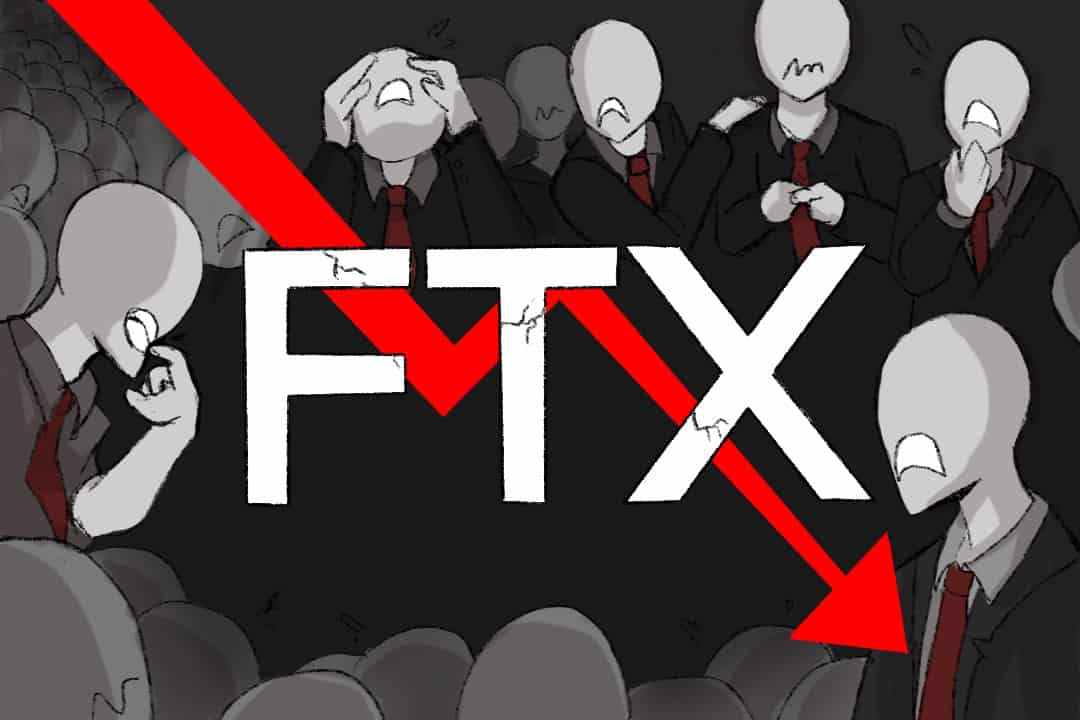Sam Bankman-Fried — founder of cryptocurrency exchange FTX — was once one of the richest people in the field of cryptocurrency. His seemingly credible appearance and persona attracted dozens of investors toward him and his company.
He has since experienced a fall from grace. His positive and future-oriented words — “My goal is to have impact” — have instead become a bitter pill to swallow for FTX investors, who have now learned that FTX was built on an illusion.
A brief history of FTX
FTX is a Bahamas-based cryptocurrency exchange platform that was founded in 2019. After its launch, FTX attracted several investors from Silicon Valley and Wall Street, eventually growing into the fourth-largest cryptocurrency exchange for derivatives trading.
FTX’s growth was rapid, and it became a notable rival to Binance — the world’s largest crypto exchange by volume. FTX had also created a digital token, FTX Token (FTT) which is similar to cryptocurrencies such as bitcoin. It is not uncommon for crypto platforms to create their own tokens, as they also offer platform perks associated with the token to buyers.
Bankman-Fried was known as the “Crypto Saviour” in the crypto industry; when digital assets collapsed earlier this year, he bailed out several firms, spending about a billion dollars. FTX also seemed immune to this downfall.
However, earlier this month, the bank sheet of Alameda Research — a quantitative trading firm owned by Bankman-Fried — was leaked, revealing that the company held a large amount of FTT. This usage of FTX by Alameda to help keep Alameda afloat did not hold well in the crypto industry. Following this revelation, Changpeng Zhao, CEO of Binance, announced that the company would sell off its FTT tokens, thus sharply dropping the price of FTT. This led many other FTX customers to withdraw their assets from FTX, putting the platform in a liquidity crunch.
The collapse and subsequent fallout
Binance did try to employ a rescue plan on November 8 to buy out FTX. During this time, FTX was under a liquidity crunch and had customers demanding withdrawals of their deposits due to the leak of Alameda’s balance sheet.
However, the problem was that FTX no longer had their deposits, and on November 9, Binance pulled out of the deal. In an interview with CNBC, Patrick Hillman, Binance’s chief strategy officer explained that FTX always seemed to have money, and yet, nobody knew where it was coming from.
Are Canadian investors bearing the brunt?
While the Bahamas seem to be a long way from Canada, many Canadian organizations had invested in this company and could face financial loss. Namely, the Ontario Teachers Pension Plan (OTPP) invested 95 million USD into FTX. While this investment reflects only 0.05 per cent of the OTPP’s total net assets, it still leaves the question of whether the decision to invest in a new technology such as crypto is worth it.
In an interview with TVOntario, Lisa Kramer, a professor in finance at U of T, provided their thoughts on the OTPP investing money into FTX, mainly pointing out how it was dangerous for the OTPP to invest in an asset that is so volatile like crypto. Kramer also pointed out that the leaders at the OTPP will need to establish to members that their investment in FTX is not a common occurrence or a representation of their investing plans.
Thankfully, the full damage that the collapse of this company has brought on has only had little impact on Canada due to the country’s crypto regulations. This is because FTX had difficulties with government agents such as the Ontario Securities Commission in 2021, leading to new regulations surrounding the trade of crypto. And in Canada, there were around only 30,000 users up until FTX’s crash — a very small part of FTX’s one million users worldwide. FTX had only just begun to fully submerge itself into Canadian crypto markets, with the plan to purchase Bitvo, a Calgary-based crypto platform in order to gain their dealer status granted by the Alberta Securities Commission.
Despite FTX’s collapse shadowing major crypto companies’ accomplishments, this story has a lesson for investors, policymakers, and regulators in the securities field. Ultimately, as we enter a more digital world, we must ask ourselves what matters to us and what values we must hold to maintain user trust. While the FTX crash came as a shock, it should not come as a shock that people invested in it. One of the reasons that investors had been attracted to FTX was that Bankman-Fried was charming and seemed to have an answer for everything; he was seen as an innovator. Now, as the bankruptcy case unfolds, we can only make assumptions about what current FTX CEO John Ray plans to do to pull FTX out of its massive destruction.


